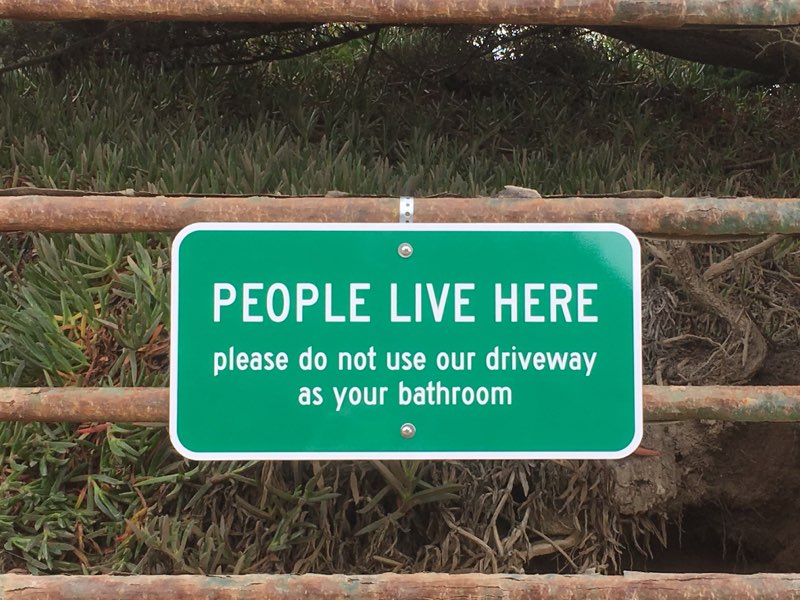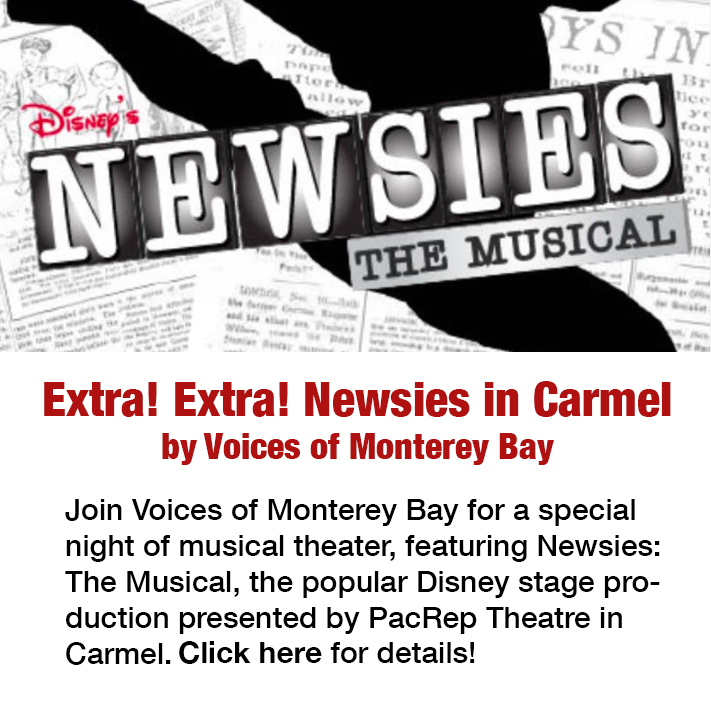Story and photo by Joe Livernois
Despite the myriad headaches throngs of tourists cause for residents of Big Sur during peak season, motorists shouldn’t expect to open their wallets for the privilege of driving down Highway 1 through Big Sur any time soon.
The idea of turning the 72-mile two-lane stretch of precarious state highway into a toll road has been kicking around since hordes of tourists, weekend warriors, destination wedding-goers, honeymooners and Bohemians first started clogging the roadway many decades ago.
Motorists still get free passage along the highway. But all it takes are weekends like the Memorial Day holiday last month to renew chatter about the possibility of charging drivers to motor up and down the South Coast. The likelihood of a toll road that limits traffic through Big Sur may not be high; it would take a lot of effort, a lot of exceptions to existing policies, and special legislation to get something like that done. Even then, charging a toll might not even solve the problem.
There was a time when most Big Sur residents were steadfastly opposed to making Highway 1 a toll road, said Kate Woods Novoa, better known as Big Sur Kate. “There used to be quite a few (who opposed a toll road,)” she said. “But many have changed their minds.”
Novoa’s plaintive story about Big Sur traffic jams appeared last week for Voices of Monterey Bay. It described the detrimental health-and-safety impacts of the traffic and it outlined efforts within the South Coast community to resolve the issue.
Her article sparked more discussion about tolls, with the idea that charging people to drive through Big Sur might limit the number of people who drive the coast. Novoa herself isn’t certain that toll roads are the answer. “I’m not sure a toll road would be enough,” she said, “but we have no data yet.” In any case, she said she favors any initiative that would limit the number of vehicles using the roadway.
But no one even knows if a toll road would work. Yosemite National Park, after all, still suffers from overtaxed roads and huge crowds, even with its $30-per-carload entry fee. “The fee to get into Yosemite is high and there’s still a lot of congestion,” noted Todd Muck, deputy assistant director of the Transportation Agency for Monterey County.
What’s more the various state and local government agencies with a finger in regulating Big Sur still insist that the region is the sort of natural public jewel that ought to be accessible to everyone. If a toll discouraged motorists from visiting Big Sur at all, it would most likely impact the underprivileged the most.
The bottom line, according to Sam Farr, is that turning Highway 1 into a toll road is “simply not possible.” It’s a state highway that receives federal funding, and existing policies dictate that government can’t start charging people to drive on them without specific new legislation, he said. Susana Cruz, a spokeswoman for the state Department of Transportation, said that Big Sur likely would not be eligible for toll-road status even if the state started allowing new toll highways because motorists have no “parallel options” — or free alternatives — to get down the coast. Muck agreed that the free alternative route issue would be difficult to overcome.
Farr is the former Congressman and state legislator from Carmel who has been commuting back and forth to the Big Sur property his family owns since he was a child. He might be as familiar with the practical realities of the roadway and its politics as anyone. Tolls might not solve the problem, he said, even if it was technically possible to start charging tolls.
“The answer here is smart crowd management,” he said. “Literally no one is in charge. It’s a huge problem; there needs to be traffic managers involved in this who know what they’re doing.”
Farr said he believes that a coordinated marketing effort could help reduce traffic problems through Big Sur. For instance, the creation of shuttle services with narration, meals and shopping stops down the highway could reduce traffic, he said.
“Caltrans was developed to maintain roadways. It was not developed to maintain an attraction, and Big Sur is an attraction.” Martha Diehl
The state Department of Transportation is responsible for the maintenance of the roadway, the California Highway Patrol might have an officer or two to enforce traffic laws, and a Sheriff’s patrol deputy could be called down when other laws are violated.
“Caltrans was developed to maintain roadways,” said Martha Diehl, a Big Sur resident. “It was not developed to maintain an attraction, and Big Sur is an attraction.”
Setting up a toll road might seem like the easy way to fix the problem and could generate a lot of money for basic maintenance and enforcement along the coast. But there’s no guarantee that a toll would do anything except raise money, said Diehl, who is a county planning commissioner.
“It’s hard to explore a specific solution until we get some kind of shared clarity on what the problem actually is and what solving it successfully would look like,” Diehl said. “We can start by getting some real-time data.”
She describes Highway 1 during high-traffic areas as the “Wild West.” The highway accommodates tens of thousands of motorists on weekends and most of them have no idea what they’re getting themselves into when they start winding their way down the coast. “I talk to a lot of people because I’m over Bixby Bridge at least four times a week,” Diehl said. “For most of the people I talk to, it’s their first trip to Big Sur ever. They didn’t know what it was going to be like.”
There are no amenities, no rest stops. Narrow dirt shoulders become parking lots. At some of the more popular sites along the way, like Bixby Bridge, motorists who are unable to find parking along the shoulder will stop in the middle of the bridge to take pictures. Desperate people who have been stuck in traffic and who can’t find public bathrooms are defecating wherever they can find a relatively out-of-the-way spot, which is sometimes the gate leading to Diehl’s home.
Diehl has affixed a sign on her gate that reads PEOPLE LIVE HERE please don’t use our driveway as your bathroom. But the sign apparently is no deterrent. “These are the sort of things that make people in Big Sur rather crabby,” Diehl said.

Martha Diehl
On the other hand, she said she believes a coordinated effort among state and local officials and business operators could ultimately lead to a Big Sur experience that is positive for everybody.
Back in the 1980s, federal officials considered a serious proposal to create a national park covering the entire Big Sur region. That “federalization” proposal would have established a de facto toll for visitors traveling through — people would have paid to get into a national park. But that proposal died a hard death.
Toll roads are relatively rare in California. Cruz said the nearest toll highways are several recent projects built in Orange, Alameda and San Diego counties. California passed special legislation in 1989 to allow private interests to do the road construction and to charge tolls to pay for the work. The legislation was specific to those four projects and does not allow the creation of other toll highways.
Changing the rules to allow a new toll road would require special legislation, Cruz said. She added that Caltrans isn’t interested in collecting tolls on Highway 1 in Big Sur. “It’s a non-starter from Caltrans’ perspective,” she said, adding that the state agency wouldn’t “start the move for new legislation.”
Todd Muck of the Monterey County transportation agency said that no formal effort has been made to initiate that sort of legislation. While possible, he said “we shouldn’t underestimate the effort it would take.”
Highway 1 through Big Sur was completed in 1937 after 18 years of construction with the help of prison laborers. It was the first stretch of roadway in California to earn a California Scenic Highway designation, and Lady Bird Johnson, then the First Lady, showed up at Bixby Bridge for the commemoration ceremonies in 1965.
What that means is that local governing bodies — in this case, the Monterey County Board of Supervisors — must develop and implement measures that strictly limit development and control outdoor advertising along the highway.
Have something to say about this story? Send us a letter or leave a comment below.

Nice follow-up, Joe. Well done. Thanks for this.
Sam Farr has an interesting idea: shuttles
Excellent article. It’s at critical mass right now, and if we want to do it right, locals need to act. Tourist industry has over-marketed and created the problem, so there must be a financial contribution to solve the problem. Residents pay a lot to live in the area already, so the cost of protecting Big Sur should be born by the visitors and the industry that actively attracts them.